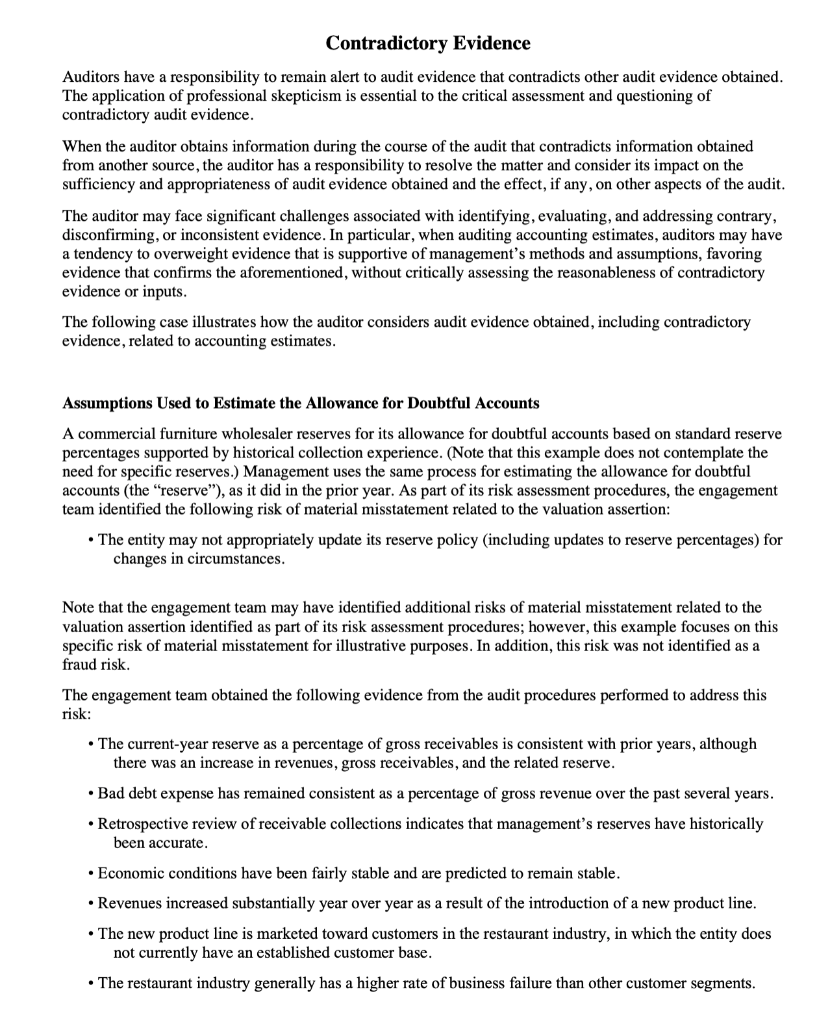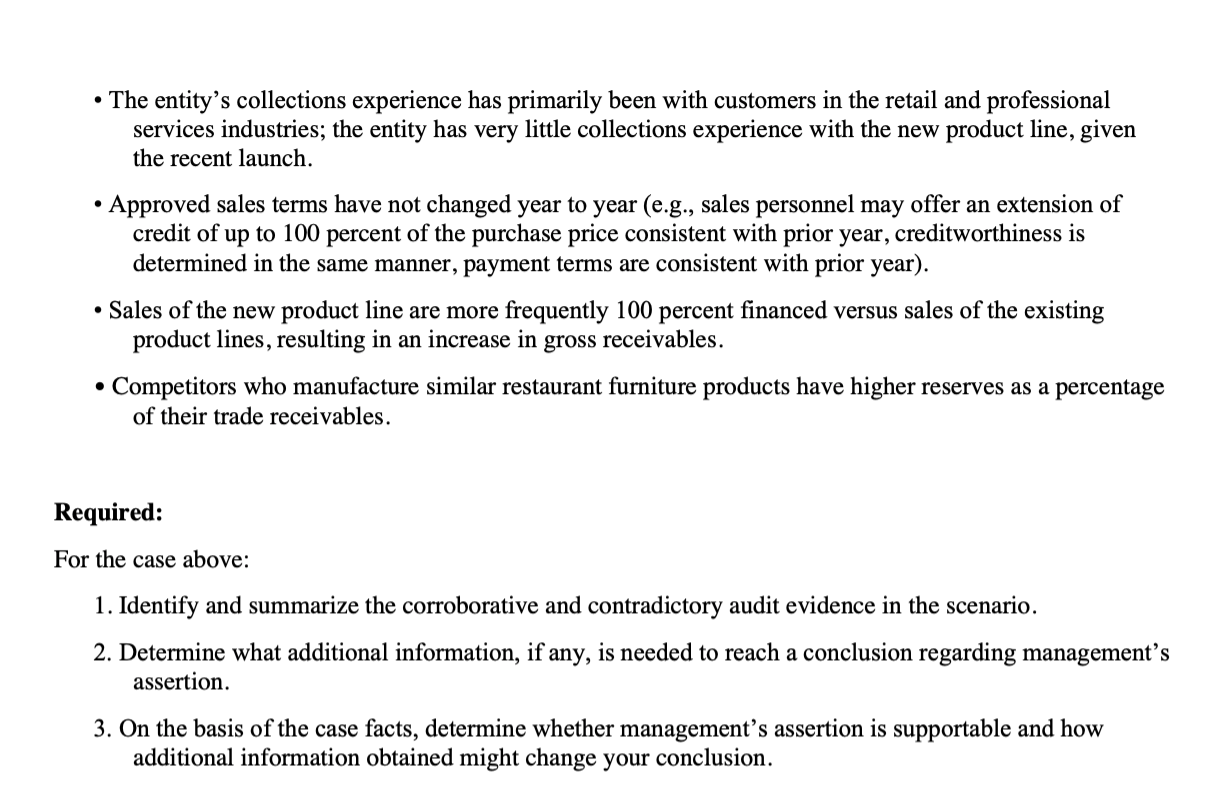

Contradictory Evidence Auditors have a responsibility to remain alert to audit evidence that contradicts other audit evidence obtained. The application of professional skepticism is essential to the critical assessment and questioning of contradictory audit evidence. When the auditor obtains information during the course of the audit that contradicts information obtained from another source, the auditor has a responsibility to resolve the matter and consider its impact on the sufficiency and appropriateness of audit evidence obtained and the effect, if any, on other aspects of the audit. The auditor may face significant challenges associated with identifying, evaluating, and addressing contrary, disconfirming, or inconsistent evidence. In particular, when auditing accounting estimates, auditors may have a tendency to overweight evidence that is supportive of management's methods and assumptions, favoring evidence that confirms the aforementioned, without critically assessing the reasonableness of contradictory evidence or inputs. The following case illustrates how the auditor considers audit evidence obtained, including contradictory evidence, related to accounting estimates. Assumptions Used to Estimate the Allowance for Doubtful Accounts A commercial furniture wholesaler reserves for its allowance for doubtful accounts based on standard reserve percentages supported by historical collection experience. (Note that this example does not contemplate the need for specific reserves.) Management uses the same process for estimating the allowance for doubtful accounts (the "reserve"), as it did in the prior year. As part of its risk assessment procedures, the engagement team identified the following risk of material misstatement related to the valuation assertion: The entity may not appropriately update its reserve policy (including updates to reserve percentages) for changes in circumstances. Note that the engagement team may have identified additional risks of material misstatement related to the valuation assertion identified as part of its risk assessment procedures; however, this example focuses on this specific risk of material misstatement for illustrative purposes. In addition, this risk was not identified as a fraud risk. The engagement team obtained the following evidence from the audit procedures performed to address this risk: The current-year reserve as a percentage of gross receivables is consistent with prior years, although there was an increase in revenues, gross receivables, and the related reserve. Bad debt expense has remained consistent as a percentage of gross revenue over the past several years. Retrospective review of receivable collections indicates that management's reserves have historically been accurate. Economic conditions have been fairly stable and are predicted to remain stable. Revenues increased substantially year over year as a result of the introduction of a new product line. The new product line is marketed toward customers in the restaurant industry, in which the entity does not currently have an established customer base. The restaurant industry generally has a higher rate of business failure than other customer segments. The entity's collections experience has primarily been with customers in the retail and professional services industries; the entity has very little collections experience with the new product line, given the recent launch. Approved sales terms have not changed year to year (e.g., sales personnel may offer an extension of credit of up to 100 percent of the purchase price consistent with prior year, creditworthiness is determined in the same manner, payment terms are consistent with prior year). Sales of the new product line are more frequently 100 percent financed versus sales of the existing product lines, resulting in an increase in gross receivables. Competitors who manufacture similar restaurant furniture products have higher reserves as a percentage of their trade receivables. Required: For the case above: 1. Identify and summarize the corroborative and contradictory audit evidence in the scenario. 2. Determine what additional information, if any, is needed to reach a conclusion regarding management's assertion. 3. On the basis of the case facts, determine whether management's assertion is supportable and how additional information obtained might change your conclusion








